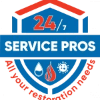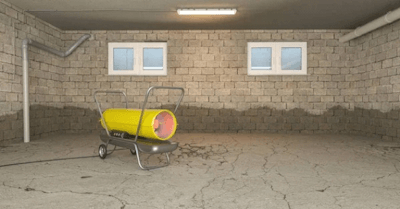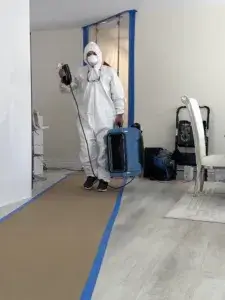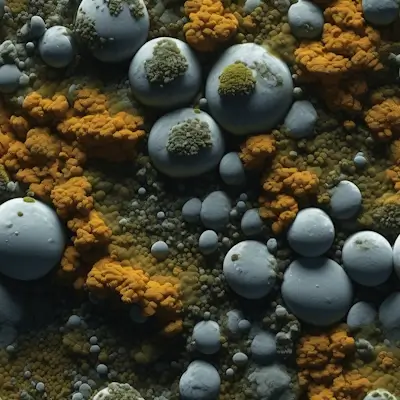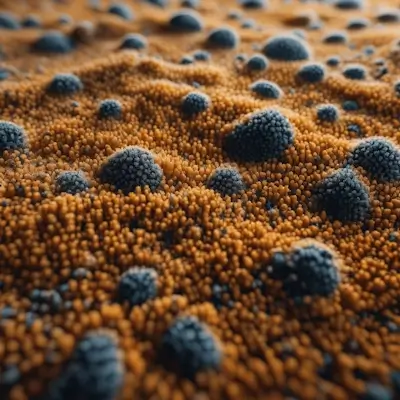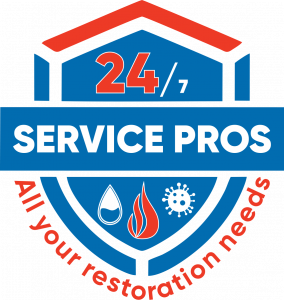Dehumidifiers are a great way to reduce moisture after water damage. Humidity causes the most
damage to floors, walls, and crawl spaces, leading to mold growth.
Dehumidifiers help keep your home free of excess moisture and prevent mold growth. It also helps restore moisture levels and lower humidity after water intrusion, such as leaks, flooding, crawl space humidity, and basement humidity.
Dehumidifiers can be used to prevent and fix water damage in several ways. They provide a moisture free environment in less ventilated places to fix issues such as musty odors, damp walls, and mold. In areas with high humidity, dehumidifiers are the best option to maintain air quality.
Knowing how to use dehumidifiers can help you tackle all water related problems.
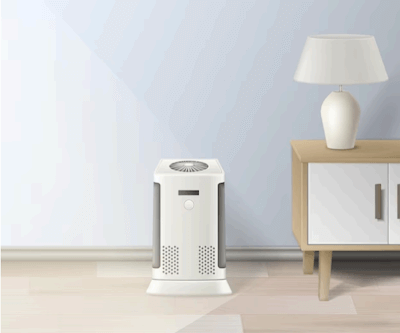
What is a Dehumidifier?
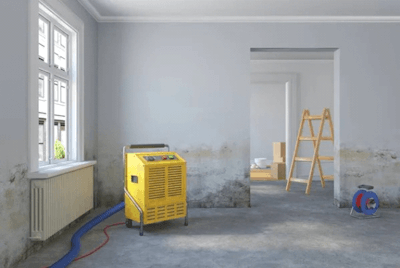
A dehumidifier is just as useful as an air purifier. It not only maintains a healthy moisture level in
the house, but also protects against allergies and respiratory issues. Dehumidifiers are fully electric devices that work by sucking the moisture from the air.
They come in different sizes, capacities, and shapes, depending on the area of the room and the level of humidity
How to Choose the Dehumidifier?
Dehumidifiers are powerful devices for solving water-related problems. They restore the moisture levels of the environment in basements, crawl spaces, vinyl floors, etc. You can choose a dehumidifier for water related damages such as water leaks, floods, burst pipes, and water seepage.
To pick the best dehumidifier for water damage restoration, keep the following in mind:
Size and Area of the Room
If the area is big, you need a bigger dehumidifier. It will dry out the entire space in less time and prevent further damage.
Type of Water Damage
Severe water damage leaves lingering moisture in the air even after you have done the repairs. Floods, burst pipes, water leaks, clogged drains, and highly humid climates such as beach houses and huts, will require a bigger dehumidifier with higher suction capacity.
Level of Humidity
If the humidity is below 40%, a smaller dehumidifier will do the job. But if the humidity is high and there’s moisture or mold in the walls and floors, you need a bigger humidifier.
Capacity and Size of Dehumidifier
A high capacity dehumidifier works more efficiently as compared to a low capacity dehumidifier. Depending on humidity level and severity of damage, pick a device that meets your needs.
Using a Dehumidifier for Basement
Basements often retain moisture and heat due to poor ventilation. This becomes a cause of mold
growth, musty odors, damp ground floor, and deteriorating wall paints. In short, high humidity in
the basement becomes a cause for mold growth in the rest of the house.
Note: If there’s mold in your basement, seek professional mold removal services immediately.
Dehumidifiers are a must in basements with higher levels of humidity. If there are any water
leaks or burst pipes in the basement, you need to fix them before running a dehumidifier.
Tips:
- Use a dehumidifier without higher capacity and more suction power if the moisture level
is above 80%. - If the size of your basement is large, pick a bigger portable dehumidifier.
- Using large tank dehumidifiers are ideal for long hours of use.
Using Crawl Space Dehumidifier
Using a crawl space dehumidifier is very important for overall house health. Use a medium sized dehumidifier with high suction power. But first, fix all the leaks and water trickles.
Using a Crawl space dehumidifier will prevent mold and improve air quality. Your floors and walls will also be safe from water damage if you use a dehumidifier in the crawl spaces.
Why should you use a crawl space dehumidifier?
Crawl space is another neglected spot for mold growth. Pipe leaks and moisture buildup under the floor bed and in crawl space. In case of water leaks, there’s little way for water to drain. As a result, moisture starts seeping into the floor beds and walls. Additionally, there’s a risk of mold and mildew growth.
Using Dehumidifier After a Water Leak
Water leaks can result from burst pipes, faulty plumbing, and leaking pipes. If water leaks and
burst pipes are not detected timely, they can create a lot of problems. It increases moisture in the
environment, causes structure rot, water seeps into floors and walls, and creates mold growth. In
order to avoid all of these problems, you need to run a dehumidifier in the affected
area.
Reasons to use a Dehumidifier when there is a water leakage?
There are several benefits of using a dehumidifier in the house after a water leak:
- It will remove excess moisture and restore humidity levels.
- A dehumidifier will quickly dry out the damaged area quickly. It will prevent moisture from spreading.
- Using a dehumidifier after a water leak will prevent the growth of mold, mildew, and pests.
- It will remove musty and damp odors from your house.
- The use of a dehumidifier will also improve the quality of the air you breathe and prevent health issues.
However, the first step is to hire professionals who can fix the water leaks.
How to Restore Moisture Levels After a Leak
Pick the Right Dehumidifier
Choose a humidifier according to the moisture level and the size of the affected area. If the water damage is minimum and moisture buildup is low, a medium sized humidifier with good suction power will get the job done.
Close Ventilation Passages
Closing all entry ways of outdoor air will accelerate the drying process of a dehumidifier. If you let outdoor air in, the dehumidifier will remove moisture from the excess air and leave out trapped air inside as well as the walls and floors.
Clear the Space
Make sure all furniture and objects are removed from the area that was affected by water leak. Covered areas will help the place retain some moisture.
Using a Dehumidifier After a Flood
A dehumidifier is your best friend in areas that were exposed to flood damage. The excess moisture that gets absorbed into the floors and walls does not dry out with ventilation.
You need powerful dehumidifiers that suck all the excess moisture from your surroundings and restore the humidity levels to normal. However, water damage after a flood causes deterioration of the property.
You need to hire trained professionals for flood damage restoration. All the damaged parts of the house such as floors, subfloors, wall panels, and drywalls will need to be replaced. Once the damaged
areas and parts are replaced and restored, use a dehumidifier.
Not only does it dry out the place, a dehumidifier also prevents mold growth. The moisture deposits cause high humidity in the air. This leads to further water damage. A dehumidifier will help maintain a healthy humidity level in your house after flood damage.
How long should you run a dehumidifier?
The duration of running a dehumidifier depends on the nature of damage. A
water leak will take less time to completely dry out. On the other hand, flood damage will take a
longer time to restore humidity level. Areas with high humidity will require frequent and long
duration of dehumidification after water intrusion. Seepage will also require a long time to dry out.
Apart from the type of water damage, there are a few more ways to determine the right duration
to run a dehumidifier:
Size of Damaged Area
Small areas affected by water will require less running time of a dehumidifier. Large areas will require more run time and more powerful dehumidifiers. Choose accordingly.
Humidity level
The humidity level is often the most important factor when it comes to deciding how long to run
a dehumidifier. If the humidity levels are high in the environment and the water damage is also
severe, a dehumidifier needs longer run time.
Humidity is high in summer and low in winter. So, flooded areas in summer will require long
hours of dehumidification. Whereas, a water leak or burst pipe in winter will need less duration
of dehumidification.
Type of Material that’s Damaged
Depending on the material used in the floor, walls, and doors, you need to adjust the time and
setting of the dehumidifier. Materials like wood, fiber, and cardboard will absorb more moisture.
Concrete, vinyl planks, and linoleum will absorb less moisture. For more absorbent materials,
you need longer run time of dehumidifier, and less run time for less absorbent materials.
When to use Commercial Dehumidifier?
You need a commercial dehumidifier in cases of flooding, severe water leaks, and heavy water
deposits in the basement. If the water has seeped into your drywall, furniture, and wooden doors,
a domestic humidifier will not reduce moisture efficiently.
Commercial dehumidifiers have high condensation capacity and bigger tanks. They are ideal for
bigger buildings, high scale water damage, and high levels of humidity.
Need Help? Get in Touch with 24/7 Service Pros
Call 24/7 Service Pros if you need water damage restoration services. In cases of floods, water
leaks, and mold growth, it’s advisable to contact service providers who have the right equipment
and expertise.
Which Areas We Serve in South Florida?
- Hollywood
- Davie
- Miami Beach
- Weston
- Hallandale Beach
- North Miami Beach
- Sunrise
- Tamarac
- Coconut Creek
- Fort Lauderdale
- Miami
- Boca Raton
- Hialeah
- Margate
- Pembrock Pines
- Dania Beach
- Lauderhill
- Delray Beach
- Pompano Beach
- Deerfield Beach
- Coral Springs
- Plantation
- Doral
- Aventura
- Miramar
- Sunny Isles Beach
